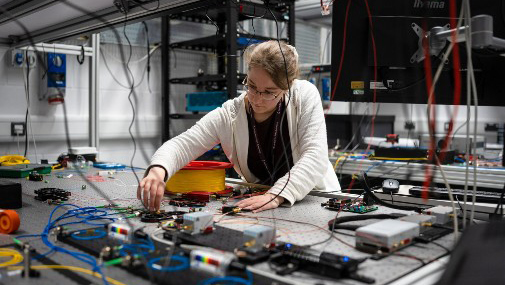
For the first time, a research team with the University of York has managed to send unhackable quantum information between Ireland and the UK. Leveraging ultra-low-loss fiber infrastructure capable of carrying “multiple terabits” of information, the researchers demonstrated how photonic qubits can already cover the 224 kilometers between the Irish Sea.
The feat – which included the collaboration of The Quantum Communications Hub and infrastructure provider euNetworks – simultaneously set a new record for longest-distance subsea quantum communication.
It’s perhaps sometimes easy to get carried away with the details of new and more powerful Quantum Processing Units (QPUs), or clever new ways of using quantum engineering to use the subatomic world as our calculators. But perhaps the best measure of a technology lies in how it’s actually applied, rather than idealized; and the reality is that quantum communication is already being tested over commercial-grade optical fiber infrastructure. And if there’s something we know from our own PC world, it’s that compatibility too can be key.
Quantum communications takes advantage of the property of quantum entanglement – where two qubits become linked across distance, and where you can’t describe one without also describing the other. The issue with entangled quantum states, however, is that they’re fickle and prone to failure – their useful states can be collapsed through any outside interference, including any attempts at pulling data from them. This instability is why a qubit traversing a partly underwater, 224 kilometer distance within a high-tech fiber-optics cable is so impressive. Back in 2021, quantum communication had already been shown across 660 kilometers – but there were no high-pressure water bodies in the way.
The research serves as a reminder of how far along quantum communications already are towards commercialization. The cable bit should be one of the lesser problems: Rockabill, whose fiber optics elements are composed of Corning glass, was installed back in 2019. At the time, it was indeed among the latest and greatest available, but technology has since advanced. Considering how it took only eight months for Rockabill to be installed, however, it doesn’t seem that quantum-compatible infrastructure will be the bottleneck – it’s simply the case that we are already using it for other purposes.
Rockabill being a fraction of the euNetworks’ Super Highway web of fiber-optics connections means that infrastructure is already ahead of the quantum curve. It’s more likely that any bottleneck will lie at the ends of the fibre optics, in the field of sensors, their sizes, reliability, ease of manufacturing, and ultimately, cost.
“Many large companies and organizations are interested in quantum communications to secure their data, but it has limitations, particularly the distance it can travel,” said research lead Professor Marco Lucamarini. “The longer the distance, the more likely it is that the photon – the particles of light that we use as carriers of quantum information – are lost, absorbed or scattered in the channel, which reduces the chances of the information reaching its target. This presents a problem when organizations need to send private digital information to other cities or other countries, where the additional challenge could also be an ocean between the communications’ start and end point.”






